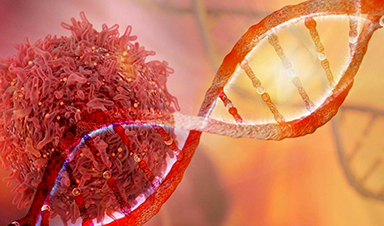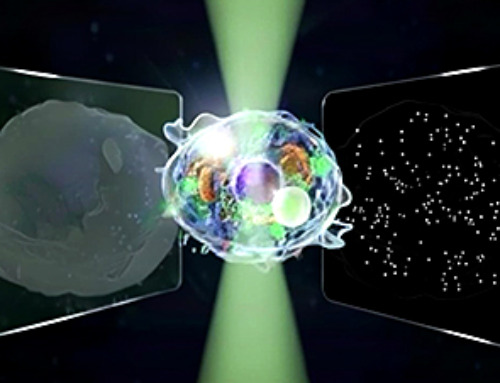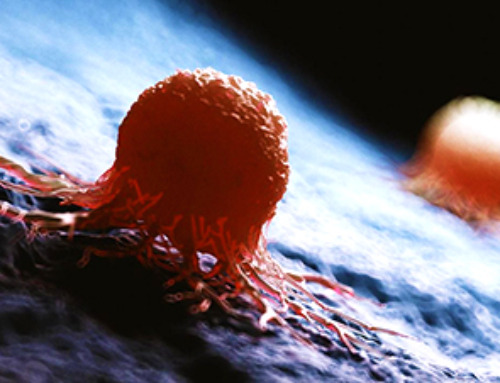New research reveals that common food packaging and utensils can shed microscopic plastics into our food, prompting urgent calls for stricter testing and updated regulations to protect public health.
Beyond microplastics: The analysis intentionally included larger plastic pieces called mesoplastics (1–10 mm), revealing plastic particles across a wider size range migrate from packaging into food.
In a recent article published in the journal npj Science of Food, researchers systematically mapped available scientific evidence regarding the presence of meso-, nano-, and microplastics (MNPs) in foods that come into contact with food-contact articles (FCAs) made of plastic, such as processing or packaging equipment.
They found that typical use of FCAs can result in the migration of MNPs into food, as demonstrated in a subset of highly reliable studies. However, they identified only seven highly reliable studies, which contributed a total of 50 highly reliable database entries, underscoring the need for standardized regulatory testing and research regarding MNP migration from FCAs to protect public health. Importantly, the authors note that while MNPs are widely detected in food, the overall contribution of FCAs, as opposed to environmental sources, to human MNP exposure remains unclear and warrants further investigation.
The study’s findings are accessible to the public via the FCMiNo dashboard (https://foodpackagingforum.org/mino), which enables users to explore data on MNP migration by food types, FCAs, polymers, and study design features.
Background
FCAs, including packaging and kitchen tools, are essential for maintaining food safety by shielding products from external contamination. However, recent research shows that these materials may also introduce contaminants, specifically MNPs, into food during typical use.
For instance, common activities such as unscrewing plastic bottle caps, slicing food on plastic cutting boards, or brewing tea with plastic-containing materials can release plastic particles into the environment. Scientists have detected MNPs in various beverages and foods, including bottled water, canned fish, take-out meals, and table salt; other reported sources include rice, beer, and soft drinks.
Though the long-term health effects of MNP exposure are still under investigation, existing research suggests that MNPs may disrupt the gut microbiome and may cause reproductive issues, immune responses, neurotoxicity, inflammation, and oxidative stress, especially in animal models exposed to high concentrations. However, many of these findings are based on in vitro or rodent models and may not directly translate to human health effects at typical exposure levels.
Notably, the paper discusses evidence that some biodegradable plastics (such as polylactic acid, PLA) may release higher quantities of MNPs than conventional plastics, but emphasizes that further high-quality studies are needed to confirm this finding.
Given these potential risks, it is important to understand how these particles enter the human food chain. However, while environmental contamination is a known source of MNPs in food, the role of FCAs used as intended has not been thoroughly examined.
About the study
In this study, the authors generated a systematic evidence map (SEM) of research evaluating MNPs in food or food simulants that came into contact with FCAs. They aimed to assess the quality of evidence, identify sources of MNPs, and inform research and regulatory priorities.
The research team searched scientific databases for peer-reviewed English-language studies published before December 2022. They used targeted search terms and included additional studies via backward snowballing and references.
Studies were screened in stages, first by title and abstract, then through full-text review, against three main criteria: the analysis of plastic particles in simulants or food and confirmed or assumed plastic content in the FCA. Even partial or assumed plastic components, like linings in cans or coatings in cardboard, were grounds for inclusion.
During data extraction, the researchers recorded experimental details, FCA types, and MNP characteristics. The information was standardized and organized into a searchable database with 600 entries.
Each study underwent a critical appraisal based on four steps: general quality, method of material identification, reporting of polymer type, and experimental design. These components were scored to evaluate reliability. Highly reliable entries demonstrated causal links between MNPs and FCAs through time-, temperature-, or usage-dependent designs.
Finally, studies with high or medium reliability were analyzed to assess similarities in polymer type or color between detected MNPs and the contacting FCA.
Key Findings
The SEM included 103 studies that examined MNPs in food or food simulants in contact with plastic FCAs, resulting in 600 database entries. Most entries involved bags, cups, tea bags, containers, and bottles, with 75% focusing on single-use items.
Approximately 85% of the featured FCAs were made of plastic, with others containing materials like glass, paper, or metal that were assumed to include plastic components, such as coatings or lids.
Over 96% of entries reported the presence of MNPs, predominantly microplastics. Concentrations were often provided in particle counts or mass. While most MNPs were detected, only 50 entries were deemed highly reliable in linking these particles to FCAs, with 128 classified as moderately reliable.
Seven studies contributed all the highly reliable entries, involving FCAs like trays, tea bags, and bottles. Many showed MNP levels increasing with temperature, time, or repeated use, confirming FCA-derived migration. However, about a third of kinetic studies reported no increase.
The authors also note that only certain types of FCAs (such as bottles and tea bags) and polymers (such as PET and PP) have been frequently studied, while many others remain underexplored, limiting cross-study comparison and generalizability.
Conclusions
This study confirms that plastic FCAs can release MNPs into food under typical usage conditions, such as opening bottles, reusing, or reheating. The authors emphasize the need for enhanced regulatory oversight, noting that current EU legislation (EC 1935/2004) addresses chemical migration but does not explicitly address the migration of micro- or nanoplastic particles, thereby creating a significant regulatory gap. A dashboard based on the study’s findings provides public access to the extracted data, enabling users to explore MNP migration in relation to food types, FCAs, polymers, and study design features.
Some kinetic studies observed increased MNP migration over time or with repeated use, aligning with known patterns of chemical migration from plastics. However, results across studies vary, and many suffer from inconsistent methods and poor data reporting.
The research team noted several other gaps in the current body of evidence. Many polymers and FCA types remain underexplored, and variation in methods makes cross-study comparisons difficult, highlighting the need for standardized testing.
The study emphasizes that reliable research should replicate real-world use scenarios, provide full data transparency, utilize validated detection methods, and clearly report polymer types and experimental conditions.
Overall, given the rising consumption of ultra-processed foods and increasing reliance on plastic food processing equipment, understanding and limiting MNP migration is critical. In conclusion, the authors call for regulatory updates that explicitly include MNPs in food safety assessments and recommend harmonized testing protocols to support comparable and reliable evidence for public health protection and policy.
The authors emphasize that a harmonized regulatory and research approach, including specific protocols for MNP migration testing, is necessary to ensure the safety of food contact materials and to better quantify human exposure risks from FCAs.
- Food contact articles as source of micro- and nanoplastics: a systematic evidence map. Zimmerman, L., Geueke, B., Parkinson, L.V., Schür, C., Wagner, M., Muncke, J. npj Science of Food (2025). DOI: 10.1038/s41538-025-00470-3, https://www.nature.com/articles/s41538-025-00470-3
News
Very low LDL-cholesterol correlates to fewer heart problems after stroke
Brigham and Women's Hospital's TIMI Study Group reports that in patients with prior ischemic stroke, very low achieved LDL-cholesterol correlated with fewer major adverse cardiovascular events and fewer recurrent strokes, without an apparent increase [...]
“Great Unified Microscope” Reveals Hidden Micro and Nano Worlds Inside Living Cells
University of Tokyo researchers have created a powerful new microscope that captures both forward- and back-scattered light at once, letting scientists see everything from large cell structures to tiny nanoscale particles in a single shot. Researchers [...]
Breakthrough Alzheimer’s Drug Has a Hidden Problem
Researchers in Japan found that although the Alzheimer’s drug lecanemab successfully removes amyloid plaques from the brain, it does not restore the brain’s waste-clearing system within the first few months of treatment. The study suggests that [...]
Concerning New Research Reveals Colon Cancer Is Skyrocketing in Adults Under 50
Colorectal cancer is striking younger adults at alarming rates, driven by lifestyle and genetic factors. Colorectal cancer (CRC) develops when abnormal cells grow uncontrollably in the colon or rectum, forming tumors that can eventually [...]
Scientists Discover a Natural, Non-Addictive Way To Block Pain That Could Replace Opioids
Scientists have discovered that the body can naturally dull pain through its own localized “benzodiazepine-like” peptides. A groundbreaking study led by a University of Leeds scientist has unveiled new insights into how the body manages pain, [...]
GLP-1 Drugs Like Ozempic Work, but New Research Reveals a Major Catch
Three new Cochrane reviews find evidence that GLP-1 drugs lead to clinically meaningful weight loss, though industry-funded studies raise concerns. Three new reviews from Cochrane have found that GLP-1 medications can lead to significant [...]
How a Palm-Sized Laser Could Change Medicine and Manufacturing
Researchers have developed an innovative and versatile system designed for a new generation of short-pulse lasers. Lasers that produce extremely short bursts of light are known for their remarkable precision, making them indispensable tools [...]
New nanoparticles stimulate the immune system to attack ovarian tumors
Cancer immunotherapy, which uses drugs that stimulate the body’s immune cells to attack tumors, is a promising approach to treating many types of cancer. However, it doesn’t work well for some tumors, including ovarian [...]
New Drug Kills Cancer 20,000x More Effectively With No Detectable Side Effects
By restructuring a common chemotherapy drug, scientists increased its potency by 20,000 times. In a significant step forward for cancer therapy, researchers at Northwestern University have redesigned the molecular structure of a well-known chemotherapy drug, greatly [...]
Lipid nanoparticles discovered that can deliver mRNA directly into heart muscle cells
Cardiovascular disease continues to be the leading cause of death worldwide. But advances in heart-failure therapeutics have stalled, largely due to the difficulty of delivering treatments at the cellular level. Now, a UC Berkeley-led [...]
The basic mechanisms of visual attention emerged over 500 million years ago, study suggests
The brain does not need its sophisticated cortex to interpret the visual world. A new study published in PLOS Biology demonstrates that a much older structure, the superior colliculus, contains the necessary circuitry to perform the [...]
AI Is Overheating. This New Technology Could Be the Fix
Engineers have developed a passive evaporative cooling membrane that dramatically improves heat removal for electronics and data centers Engineers at the University of California San Diego have created an innovative cooling system designed to greatly enhance [...]
New nanomedicine wipes out leukemia in animal study
In a promising advance for cancer treatment, Northwestern University scientists have re-engineered the molecular structure of a common chemotherapy drug, making it dramatically more soluble and effective and less toxic. In the new study, [...]
Mystery Solved: Scientists Find Cause for Unexplained, Deadly Diseases
A study reveals that a protein called RPA is essential for maintaining chromosome stability by stimulating telomerase. New findings from the University of Wisconsin-Madison suggest that problems with a key protein that helps preserve chromosome stability [...]
Nanotech Blocks Infection and Speed Up Chronic Wound Recovery
A new nanotech-based formulation using quercetin and omega-3 fatty acids shows promise in halting bacterial biofilms and boosting skin cell repair. Scientists have developed a nanotechnology-based treatment to fight bacterial biofilms in wound infections. The [...]
Researchers propose five key questions for effective adoption of AI in clinical practice
While Artificial Intelligence (AI) can be a powerful tool that physicians can use to help diagnose their patients and has great potential to improve accuracy, efficiency and patient safety, it has its drawbacks. It [...]





















